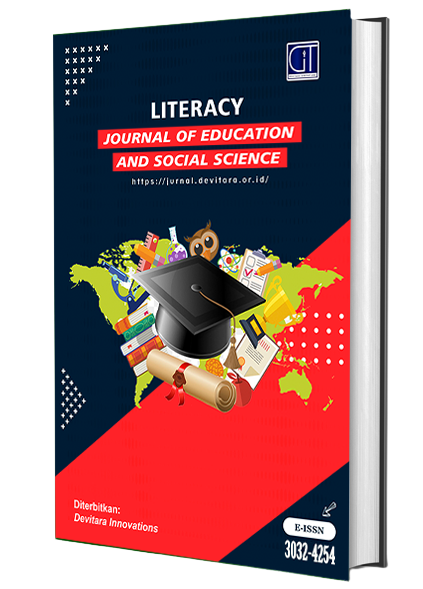Sexual Harassment: M. Hasbi Ash-Shiddieqy's Perspective in the Interpretation of An-Nur
Keywords:
Sexual Harassment, Interpretation of An-Nur, Abuse, FahsyaAbstract
This article was created based on the many cases of sexual harassment in Indonesia, This phenomenon covers various forms of sexual violence, ranging from verbal to physical harassment, which occur in various environments. The Qur'an is the ultimate guide for Muslims in organizing their lives and dealing with various problems. The Qur'an was revealed with the aim of becoming a guideline for life, which can bring blessings to this world and the hereafter. Sexual Harassment can be called fahsya' which has meaning in everything that is considered bad by him, both in words and actions. The word "fahsya" is often used to describe adultery. which Hasbi Ash-Siddiqy interprets the word fahsya' is infidelity which is the most cruel betrayal in a relationship, igniting a burning fire of hostility and dividing the foundation of trust. Especially in households where infidelity can lead to violence, especially in the household. The Qur'an gives strict instructions regarding the act of adultery, which includes various forms of sexual harassment, and stipulates severe punishment for the perpetrator of which according to Islamic law is a hundred times of dera or whipping. In addition to punishment, the Qur'an also provides preventive measures One of the suggested methods is Ghadl al-Baṣar and Tazkiyatun Nafs, If these measures are implemented, it can create a safe environment, while the research method uses a literature approach This method involves collecting and analyzing data from various relevant literature such as books, books, articles, and other documents to understand how the verses of the Qur'an overcome the problem aforementioned.
References
Arief, Abdussalam. 1999. "Eksistensi Hukum Rajam dalam Pidana Islam." Jurnal Jinayah al-Hudud. Yogyakarta: Pengurus HMJ Jinayah Siyasah Fakultas Syari’ah IAIN Sunan Kalijaga. Diakses dari http://digilib.uin-suka.ac.id/376/ pada 4 Mei 2018.
Bassar, M. Sudrajat. 1986. Tindak-Tindak Tertentu di dalam KUHP. Bandung: Remaja Karya.
Harahap, Nursapia. 2014. "Penelitian Kepustakaan." Jurnal Iqra’, Vol. 08 No. 01, Mei.
Hasbi Ash Shiddieqy, T.M. 1965. Tafsir al-Qur’an al-Majid an-Nur, Jilid 3. Jakarta: Bulan Bintang.
Hasbi Ash Shiddieqy, T.M. 1965. Tafsir al-Qur’an al-Majid an-Nur, Jilid 4. Jakarta: Bulan Bintang.
Karlina, Annisa, dan Hendro Prabowo. 2014. "Pelecehan Seksual Diangkutan KRL Ekonomi dari Perspektif Pelaku." The 17th FSTPT International Symposium, 22-24 Agustus.
Nakha’i, Imam. 2024. "Islam Menolak Kekerasan Seksual." Diakses dari https://swararahima.com pada 22 Maret 2024 pukul 13:35.
Santrock, J. W. 2007. Adolescence [Remaja] Jilid 2. Alih Bahasa: B. Widyasinta. Jakarta: Erlangga.
Setiadi, Edi. 2014. "Perlindungan Hukum Bagi Wanita dari Tindakan Kekerasan." Jurnal Sosial dan Pembangunan, Vol. 17 No. 3.
Sholihin, M., dan Rosihon Anwar. 1965. Op.Cit.
Taufik. 2012. Tazkiyatun Nafs. Lumajang: Pustaka Arafah.
Thabari, I. J. 2000. Jami’ul Bayan ’an Ta’wilil Qur’an. Muassasah Ar-Risalah.
Zakariyah, Abu Al-Husain ibn Faris. 1994. Mu’jam Al-Maqayis Al-Lughah. Cet Ke-1. Beirut: Dar Al-Fikr.













